The Top Shelf: The Battle Royales 01: Final Fantasy
By Mento 2 Comments
Welcome to The Top Shelf, a weekly feature wherein I sort through my extensive PS2 collection for the diamonds in the rough. My goal here is to narrow down a library of 185 games to a svelte 44: the number of spaces on my bookshelf set aside for my PS2 collection. That means a whole lot of vetting and a whole lot of science that needs to be done - and here in the second round, that means narrowing our laser focus to one game per week (at least). Be sure to check out the Case File Repository for more details and a full list of games/links!
Extra Note: We're down to the wire now, just a few loose ends to tie up. Specifically, figuring out which of two (or three) very similar games from the same franchise is the superior entry. Our strict one-game-per-franchise policy means we'll need to bring in some science to determine the truly shelf-worthy here in The Top Shelf's third round: The Battle Royales!
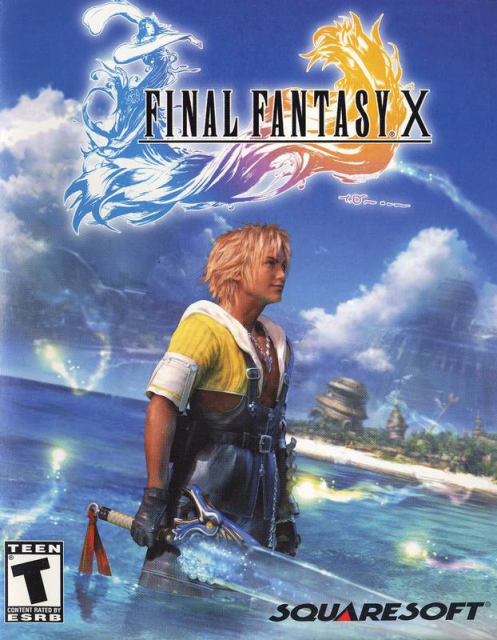
Welcome to the Battle Royale stage of The Top Shelf! Before, we were sorting the wheat from the chaff. Here, we're sorting the wheat from the slightly lesser wheat, or wheat from the maize if you prefer. In each edition of this, the third round of our year-long elimination process, I've taken two or more games that are either the same series or are so fundamentally similar that I'd rather just keep the superior sample for shelf posterity. The rub is that I like the games an equal amount, or close to it, and that means having to take a deeper dive: I'll be breaking each pair (or more) of games down to their constituent parts, comparing and contrasting them, and determining - scientifically! - which of the two I actually favor. It's about as objective as this blog series is ever going to get, but all the same my usual disclaimers concerning personal preference still apply. Your conclusions might be different and I'd be happy to hear why in the comments below. Not that I'm likely to change my mind, but as I said: it's a very close affair with many of these games, hence the need to get granular.
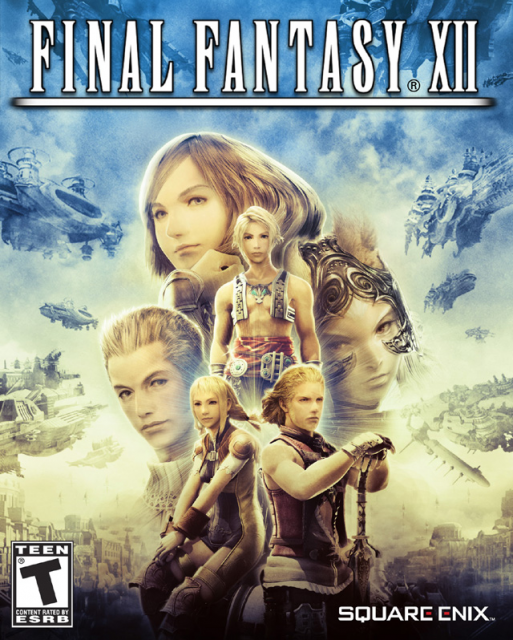
Our first contest is between Squaresoft's Final Fantasy X and Square Enix's Final Fantasy XII. Now, I adore both of these games. Final Fantasy X came out in 2001 and was the first game to ever confirm to me that the PlayStation 2 was a worthwhile purchase (of course, it only took a few more years and a few dozen more all-time favorites to realize it was probably my second favorite platform ever) while Final Fantasy XII was one of the few games with the scope and longevity to utterly enrapture me for over a month. Final Fantasy X's genius was in its simplicity (well, sphere grid aside), while XII's was the opposite in how it layered in complex Gambit system AI trickery and party micromanagement. Each had their share of great and terrible characters: ones to root for and ones to stick in the darkest recesses of the party menu and forget about until they start squawking in cutscenes again. I loved the Sphere Grid, as Byzantine as it first appeared. I loved the Gambit System, even if it did eventually allow for the game's AI to become so resourceful as to essentially eliminate the need for human input. Between FFX's monster arena and FFXII's additional Espers, both games had more optional content than was perhaps healthy.
But we're here to try to figure out which of the two I actually like the most, and to do that we have to start breaking these two games down into their base components. Specifically, the components that matter most to the Final Fantasy franchise in particular.
Characters
Most would say that an RPG's story takes precedence over its characters. I think that's probably true of Western-made RPGs where your characters, including what is usually a blank slate of a protagonist, are often a means to an end. Japanese RPGs feel like slightly more episodic in comparison, like it's a 20 episode arc of an anime TV show which occasionally takes a break for character-centric episodes or off-beat filler episodes where no progress towards the ultimate goal is made (and there are certainly western-made RPGs that feel like this too so don't get me wrong, especially BioWare games). Final Fantasy X's and Final Fantasy XII's casts are important because you're spending upwards of 100 hours with these chuckleheads, and they end up having a much more profound (occasionally deleterious) effect on your enjoyment of the game.
To summarize, Final Fantasy X has seven playable party members: Tidus, Yuna, Wakka, Lulu, Kimahri, Auron and Rikku. Final Fantasy XII has six: Vaan, Penelo, Ashe, Basch, Balthier and Fran. If I start pointing out the strengths and weaknesses of each character we'll be here all day, so instead I'll compare both sets as ensembles.
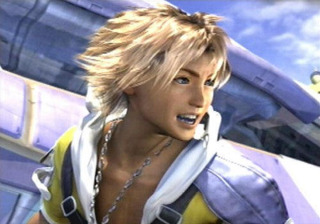
With X, you have a team that is brought together for the sake of one person, Yuna, who is not only a dear friend but represents a beacon of hope to all of Spira with her mission to defeat Sin and usher in a welcome if brief period of peace. To keep Yuna alive is to keep that hope alive. At the same time, excepting this one uniting thread, it takes a while for her team of guardians to warm up to each other. Newcomer Tidus, for example, is ostracized by the more serious guardians of the team - Lulu and Kimahri in particular, and Wakka really only keeps him around because he might prove to be an X factor in his failing Blitzball team - before Yuna insists on his companionship. The Al Bhed firecracker Rikku clashes against the bigoted Wakka, Lulu remains cold and distant for most of the game for reasons that become clearer once her backstory is later explored, and Auron remains a distant (and badass) figure who doesn't so much lead the team but guides them in a largely hands-free way that allows them to figure out and deal with important truths about their journey on their own. Most RPG teams find themselves united in common purpose despite their differences, but you don't often see them bickering and falling out over how that purpose might be met. In Final Fantasy X, even the surety of that singular purpose becomes muddied up before too long, and the bonds of camaraderie grow stronger with each new devastating revelation. What's perhaps most praiseworthy is that there isn't a weak link in the bunch: each character is appealing enough in a narrative sense and each exhibits a certain degree of hidden depth, though with some it's more hidden than others. The two downsides I'd say the Final Fantasy X cast has compared to XII's is the quality of the voice acting and localization (which is abysmal, don't even @ me with that shit) and its overall weaker antagonists: Seymour's the least surprising heel twist in video gaming history, Yu Yevon isn't really anything at all having mentally degraded to a rampaging id, Sin's more a force of nature akin to a barely sentient typhoon, and I really have trouble seeing Jecht as a villain given the nature of his involvement with Sin. Yunalesca's creepy boss design was neat, though.
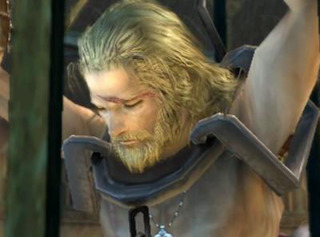
With XII, you have what are essentially three male-female couples - one platonic and the other two more ambiguous - that are moving towards separate goals and work together when it turns out to be mutually beneficent to all parties. With Ashe and Basch, the only two characters that I would say are central to the game's overarching plot, they're looking to liberate Rabanastre and seek out answers behind various past betrayals - for many reasons, neither can be supported openly by their fellow law-abiding countrymen, and Ashe has understandable trust issues with Basch, so their dynamic as an incognito princess and disgraced general has a sharp edge to it. Balthier and Fran, meanwhile, are mercenaries that decide to assist Ashe for seemingly little more than a promised windfall before their deeper connections to the rival empire are revealed. Balthier likes to refer to himself as the leading man, but all that really means is that he's the protagonist in a completely separate but parallel story of his own. Fran's given her own arc of sorts, but it doesn't really amount to much: she's there to support Balthier as his partner and that's really all she's willing to reveal about herself to this gaggle of revolutionaries and would-be sky pirate rivals. Then, of course, you have Vaan and Penelo, the former an impulsive and obnoxiously assertive rogue and the latter a long-suffering childhood friend who seems to follow him on his dangerous adventures more out of loyalty than in pursuit of her own dreams. There's a distinct lack of cohesion in this party format that FFX nails in contrast, and the fact that anyone can be anything in FFXII's versatile "license system" means that extraneous characters feel even more so: when your idea of a party is a black mage, a tank, a healer and you can literally make any three of your six characters any of those classes, it's easy enough to kick the three characters you least like to the curb. Of course, it's better to try to have one of everything and bring out characters that best suit the opponents you're facing, but for the most part you're going to be running across the world with your preferred trio. I will say as a final note that FFXII's antagonists and side-characters are at least more fun than FFX's, especially the various Judges and nuanced characters like the Solidor siblings and Basch's former comrade Vossler.
Advantage: Final Fantasy X.
Story

Without getting too deep into particulars, Final Fantasy X's story is a classic road movie type of set-up, where the party has a set itinerary of destinations in mind - rather than arbitrarily bouncing from one location to the next as sudden developments in the plot demand - and getting sidelined by all manner of misadventures along the way. Despite the sheer linearity of this journey, it almost feels more episodic than one might expect, with each location forming its own set-piece: observing the effects of Sin in Kilika, worrying about the big Bliztball tourament in Luca, dealing with Seymour's advances in Guadosalam, Yuna getting abducted on the Moonriver ferry, and so on. These "episodes" all tie into the greater narrative, as each also serves to deliver some new tidbit about the nature of the world of Spira and Yuna's role as a summoner and destined savior, but the game feels split up in a way to make the journey feel more serial in nature. Without being a big expert on Asian literature, I might suggest that there's an influence from Journey to the West: the seminal Chinese novel about a devout and altruistic religious figure being escorted through dangerous lands by a group of preternaturally gifted if flawed protectors, with each step along the way met with any number of new perils either incidental or specifically aiming to undermine the protagonist's holy quest. I also appreciated that at some point the game pivoted from characters explaining the plot to Tidus as if everything about Spira and "the summoner's journey" was incredibly obvious to anyone who paid attention at Spira's equivalent to Sunday School, to no-one really being quite sure about their journey, their religion, their purpose in life, or themselves.
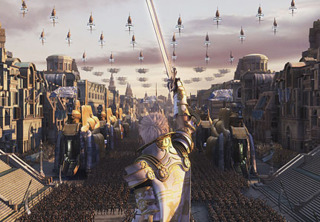
Final Fantasy XII's plot is... unfortunate. Not because it cribs so heavily (and so oddly, given the different genres) from Star Wars Episode IV: A New Hope, but because the original project lead dropped out halfway through to leave his understudies and substitute to complete the story based on his notes and their own interpretations of the story thus far. So what begins as a nuanced conspiratorial take on the upper echelons of a domineering empire and the small, recently annexed nation-state caught in the middle falls away to a slightly more generic tale about shadowy God-like beings pulling the strings in the background and a rush to the end with most of the more layered characters in the Empire dying off-screen to further the main antagonist's plot. It also doesn't help that FFXII's more open-world format is not conducive to stringently-paced plotting: there are times when you need to see what happens next with the context of what just happened in the story scene prior, and when you have a ten hour gap between the two so you can faff off and explore desert ruins or fight a few bounty hunts or find new Espers to recruit there's a point where a highly intricate plot in an expansive open-world RPG becomes something of a detriment. It's a curious thing that the story progression in this game makes literal how most open-world games eventually feel like to the player: the first half is compelling and narratively-rich, but the second half feels like it's in a hurry to conclude because the player is bored of exploring this particular world and just wants the game to be over and done with. Suffice it to say, even with Yasumi Matsuno's vision for Tolstoy-level baroque narratives, the game's story buckles under these unforeseen yet inescapable problems.
Advantage: Final Fantasy X.
World Design
A good RPG is nothing without a well-realized world to explore. That means a certain amount of stylistic distinctiveness in one's immediate surroundings, as well as the implication of a greater world just outside the locations that the player visits. In most Final Fantasy games, you end up exploring the entire globe on your quest - with some locations being more vital to the plot than others.
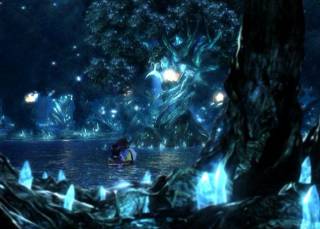
With Final Fantasy X, you have this odd situation where you're ostensibly taking the direct route from temple to temple in order to ensure Yuna's quest is expedited as much as humanly possible, given what's on the line and the bodycount building up in the background, but at the same time there's no clear indication that what you see isn't all that there is. You could argue that the world of Spira is one where there's only a few pockets of civilization left that Sin hasn't obliterated, crowded around the major areas of worship Yuna must visit out of necessity for their religious practices. So it makes sense that you're seeing every bastion of civilization en route to the more plot-significant temples for the aeons they contain. At the same time, I found the world of Spira to be kind of dull and repetitive: with the exception of the snowy Mt. Gagazet and the desert Bikanel with its Al Bhed city of Home, the majority of the game's locations have a similar sub-tropical theme. It is kind of cool that the quest progression has a vertical nature, so you begin somewhere hot and gradually move north towards more temperate climes, but a majority of the game's wilderness locations have a certain barrenness to them. Still, you have picturesque highlights like the ethereal Macalania Woods and the Farplane, or the once-majestic futuristic city of Zanarkand. Also, for as much as I like the weird imagery of the temples, those Cloister Trials were not a whole lot of fun.
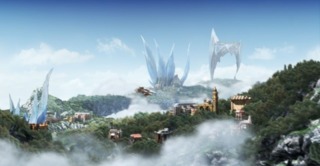
Final Fantasy XII definitely has X beat in terms of variation, with such a huge world to explore that you're frequently wandering into new lands and new dungeons almost by accident. The slight issue here is that the lack of any kind of guidance makes a lot of these regions enormous and easy to get lost in, but I suppose that should come as part of the territory when you're exploring the great outdoors. Later RPGs have tended towards these large, multi-branched open environments that, while not necessarily inspired by FFXII directly, have proven more engaging to explore than a series of single winding paths through dungeons. The interior locations of FFXII tend to be a bit more rigidly structured and focused, and I remember digging just how alien those locations could be with all the glowing glyphs and ancient technology. FFXII's immense world also means there's a lot of incidental world-building by way of optional lore and non-story-critical details related to each region, and that's kind of what I meant at the offset about making the world feel a bigger place than just the locations you're able to visit, even if it doesn't mean more than a few historical excerpts or a big matte painting in the background you can't travel to as hints to what's out there. Even the illusion of a larger world is better than knowing the handful of locations and dungeons are all that there is, at least in my opinion. I also think Rabanastre is a really fantastic city; a massive trading nexus inspired by the likes of Marrakesh or Cairo with some surprisingly attractive sewers, though you do spend an awful lot of time stuck there before getting out to see the world.
Advantage: Final Fantasy XII.
Combat
The essence of JRPG combat boils down to a balance of speed and strategy. You're generally expected to fight a lot of enemies during the course of any RPG because it's a necessary means of gathering money and experience points for character development, but no-one wants to spend that much time fighting a battle that has a foregone result. If the characters are far more powerful than the enemies around them, RPGs should take that into account and either offer shortcuts (such as EarthBound's "instant win" whenever you initiated combat with weaker foes) or ensure that the combat moves at a rapid clip when it needs to. In addition, the player should be frequently challenged with level-appropriate encounters, in particular boss fights, and be forced to smartly strategize to win. Most any JRPG experience involves both types of encounter in abundance, and a good one should know how to expedite the lesser fights while ensuring that the tougher battles require more variance than slamming the "attack" option over and over in the menu.
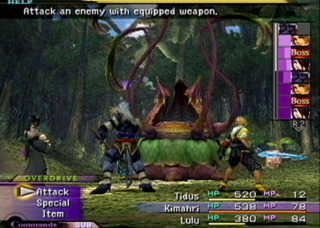
Final Fantasy X offered another variation on the franchise's vaunted active-time battle system, but actually removed the most notable aspect - that characters and enemies continue to act even as the player picks out their next move - in favor of a turn order determined by the characters' stats and previous actions. This allowed players to breathe easier when determining their next course of action, at the cost of the franchise's combat's distinctive edge. The next most significant change is how characters could be swapped in and out of battle, and each served a distinctive role: Tidus was best at hitting faster and more elusive creatures, Wakka could hit flying units with his ranged ball attack, Auron could take down armored enemies, Yuna and Lulu had magic for physical-resistant enemies, and Rikku could eliminate robots by stealing vital components and leaving them to collapse into an inanimate heap. Switching characters on the fly also allowed players to extract characters in critical state, or fly someone in for a quick party buff or heal before dismissing them again. Characters act and switch quickly enough that you can breeze through standard encounters, and the game has some particularly tough boss fights later on to sink your teeth into that also takes full advantage of the swapping system.
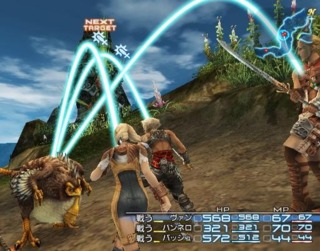
With Final Fantasy XII, combat returns to the real-time model where characters attack and perform actions with specific-sized intervals between. Characters largely act on their own until the player designates an action more sophisticated than "attack nearest guy". This allowed the player to either bounce between all three active characters, or stick with one allowing the AI to take over the rest until the player needed them for something specific. To assist with the AI control, the game created the Gambit system which allowed players to construct rudimentary AI routines that it would perform once certain conditions were met, such as a character healing themselves once they passed under 30% of their total health. Both these actions, and the conditions that triggered them, were handed out conservatively across the game until you had enough variables to essentially stick the game on auto-pilot towards the later regions of the game. Critics derided this system for allowing the player to configure the game in such a way that the human element was no longer necessary, but you could also argue that it presented a sophisticated puzzle where you had to anticipate everything you might need an AI companion to perform in a state of emergency. When you start getting so granular to a level where you're commanding the AI to heal certain status effects immediately or hitting elemental-weak enemies with their specific weakness, and how each boss requires a different approach and attacks to prepare against, it becomes a game that greatly favors those who are able to think ahead and plan accordingly. It's not just equipping the right gear and stocking up on curatives - if you can account for every possibility, there's a certain amount of satisfaction to be gained from creating an AI algorithm that the game couldn't defeat. The divisive nature of this AI system means it's the only one like it in existence, as far as I'm aware, which gives Final Fantasy XII another mark in its column. You know what else is another plus for Final Fantasy XII? No random encounters! Plus, this weird monster ecosystem you can watch at work whenever you're aren't actively being targeted - I particularly like how you have to dodge enormous T-Rexes and avoid triggering extremely powerful elementals while exploring the world, perhap vowing to one day return when you've grown a bit more formidable.
Advantage: Final Fantasy XII.
Character Progression
My favorite element of any RPG is seeing characters grow stronger and be given more variation in what they can do in combat, often then testing out their new limits on the first unfortunate monster to cross their path. A good character customization interface should afford options, either derived from choosing between several new abilities in a skill tree or opting for, say, a type of armor that is stronger to one type of damage but weaker to another.
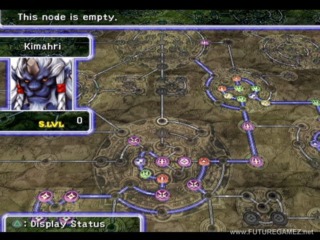
Final Fantasy X's big contribution to the annals of over-elaborate character development systems is the Sphere Grid: an enormous skill tree with multiple branches that comprise of empty nodes, stat nodes, and ability nodes. The player spends points they earn upon levelling up to light up sections of this grid, allowing them to spend a different currency - spheres earned from enemy encounters, some of which are rarer than others - to activate the nodes they've passed and reap benefits that range from passive stat boosts to whole new abilities to use. The best part of the Sphere Grid is that every character starts in their own section, one that highlights the kind of the character they present themselves to be, such as Auron as a strong but slow samurai or Lulu as an elemental mage, but affords the opportunity for characters to pass over and start acquiring skills from another character's ability set. For instance, Auron could pass over to Tidus's or Rikku's part of the grid and start availing himself of their higher frequency of speed boosts to bolster his own relative torpidity. Lulu and Yuna could cross over to each other's realms, further enhancing their respective magical and MP stats while increasing the number of spells in their repertoires. It's a highly versatile progression system that initially pigeonholes the team, perhaps a necessity for those just starting the game who would prefer some cut-and-dry combat roles, before allowing them to evolve in any number of directions.
Final Fantasy XII expanded on this concept, tying character progression to the equipment they wore and locking that equipment behind "licenses" that characters had to earn from levelling up and activating nodes on a more traditional square grid. The twist to this system is that the type of weapons you could use also defined the type of character using them, so knives would be the tool of rogues, and spears might afford more lancer-like abilities such as tall jumps and longer reach. Armor, likewise, would determine a character's speed and defensive values, with certain armor types suiting different character builds. To encourage players to stay versatile, special abilities called Quickenings - the game's equivalent of Final Fantasy VII's Limit Breaks - were placed at the various far corners of the grid, and the only way to ensure every character received their share was to diversify the directions they took across the board. It's an elegant enough system based on the rather inelegant idea that you need more experience to buy licenses for weapons before you can use them, especially when you spend most of the game as fugitives of the law, but it hits some semblance of FFX's versatility. Even so, it's really just a pale shadow of the original.
Advantage: Final Fantasy X.
Presentation (Graphics & Music)
Final Fantasy, more so than any other RPG developer, is known for pushing the envelope with their presentations. If they're not the best looking game on their original console, they're close enough to it, and a core facet of their appeal has been in their gloriously detailed environments and incredible orchestral-synth scores. Well, if that's something you're into in your RPGs at least. Many of us do just fine with ASCII dwarves.

Final Fantasy X set the bar for the rest of the generation to follow with its debut on the PS2, really exploring what the then-nascent console could do in terms of graphical fidelity. It's a little less overwhelming these days, even with the fancy HD remaster, but it's still aged surprisingly well. I think part of that also is due to the game's liberal use of color and creating a distinctive cultural commonality across Spira's locations through its tribal art and decorations. However, there are points where the absurd fashion sense becomes a little hard to buy from a hardscrabble society that is ostensibly more focused on not getting obliterated by a giant monster than attaching a bunch of unnecessary belts and pouches and random miscolored patches of fabric to their outfits for the sake of sartorial expression. It also has one of the best soundtracks of any Final Fantasy game, which is high praise considering the competition, with standout tracks like the standard battle and Seymour boss themes, the chill sounds of Besaid, or the haunting To Zanarkand.
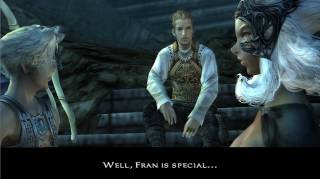
Final Fantasy XII, meanwhile, has this odd graininess which isn't so much bad but distracting. It looks every bit as good as Final Fantasy X with regards to locations and environments, perhaps even surpassing FFX's generally dull outdoors world design, but character's faces have this semi-realistic look that ends up being less expressive overall. Like the illusion that these are real faces would shatter the moment they're forced to express too much. It's a little uncanny, but it does give the game a certain painterly look that I feel is a worthy successor to Final Fantasy Tactics's juxtaposition of Renaissance-like knightly figures with bizarre noseless faces. It's an acquired taste. The music is generally excellent too - as could be expected from the Sakimoto/Iwata team that also composed FFT's soundtrack among others - but besides its excellent boss theme I can't think of too many tracks that really stick out the way Final Fantasy X's Uematsu score does. Many improvements across its presentation, natural after five years of technological progress, but not quite as impactful or as memorable overall.
Advantage: Final Fantasy X.
Optional Content
Finally, we come to what was still a burgeoning concept in story-focused JRPGs in this era: the idea of including a lot of additional, often higher level content for players to chase after once they had grown strong enough to defeat the boss and were looking for more challenges. Previous Final Fantasys and other JRPGs had their optional areas and superbosses, but it wasn't until Final Fantasy X that this aspect started to fly off the rails. The challenge put to game designers is in figuring out how to make this supplementary content worthwhile.
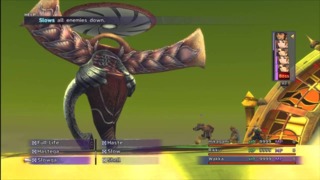
In Final Fantasy X, you become strong enough to defeat the final boss without really stressing out about optional content. Up until that point, all optional content got you was the occasional better piece of gear, some more spheres to spend on the sphere grid (including the rare node-unlocking spheres) and story stuff that probably should've been in the main game. Close to the end, you start picking up hints for "Celestial Weapons"; weapons that start weak but become strong after one upgrade, albeit with a freeze on earning new points for additional sphere levels, and incredibly strong after two upgrades. The second upgrade item for each character's Celestial Weapon was invariably an enormous chore that effectively meant mastering one of the game's many mini-games: a rare prize for a Blitzball tournament, a perfect run in the Chocobo races, total mastery over lightning dodging in the Thunder Plains, etc. However, you needed these weapons, or a costly workaround that involved valuable crafting materials, to have a prayer of defeating the game's many superbosses, most of which could be found in the monster arena and whose ranks also be expanded with the International version with the likes of the Dark Aeons. I can speak with some experience that none of this process was worth the trouble.
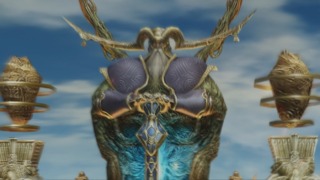
In Final Fantasy XII, the optional content is scattered across the world for the player to find at any time, with many zones and dungeons irrelevant to the core story that only really exist for the sake of the game's big bounty hunt "mark" system and the optional Espers the player could recruit once they'd been introduced to the concept. I can't say I used the Espers too often, but I still felt compelled to seek out each one across the world and recruit them after a battle to test my worth. My reasons for doing so were partly out of pride, partly out of wanting to see all the cameos and references to the antagonists of former games, and partly because I enjoyed exploring the world so much. Another largely optional element was grinding monsters to fill out a bestiary, and hitting certain targets of specific monsters unlocked new lore and information to peruse. It was just as time-consuming and tiresome as FFX's optional content for the most part, but it definitely felt more like you were being rewarded for your efforts.
Advantage: Final Fantasy XII.
Conclusion
I'm surprised. I figured Final Fantasy XII would sweep this, but I think my affection for XII is more weighted because it's so divisive within the Final Fantasy fandom. I love both games, but my affection for XII makes me want to rep it more to drown out its naysayers. Conversely, I'm less inclined to defend FFX largely because it requires less defending in general. I think had Yasumi Matsuno stuck around for the entirety of FFXII's development this contest would be a completely different story, but I think it's no real surprise that a universally loved (well, more so than the other) Final Fantasy game beats out a largely contentious one - even if I might say I prefer it, had the science not proven otherwise. Science never lies, people.
So with four wins out of seven categories, Final Fantasy X progresses to the shelf while Final Fantasy XII is eliminated. Thanks for stopping by, and look out for another edition of The Top Shelf: Battle Royale next Tuesday.
(NB: Future Battle Royale entries will be WAY shorter. With a month off, I felt like the return of The Top Shelf should come with a jumbo-sized blog. Also, it's probably true to say I think way too much about Final Fantasy in general.)
